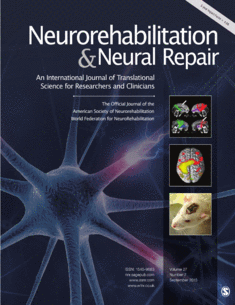
Pediatric Orthopaedics
Patterned sensory enhancement improved gross motor capacity in cerebral palsy children
This report has been verified
by one or more authors of the
original publication.
Neurorehabil Neural Repair. 2013 Oct;27(8):684-94
36 children aged 5 to 13 years with spastic diplegia were randomized to evaluate the efficacy of added patterned sensory enhancement (PSE) music to a home-based music-trained loaded sit-to-stand (STS) exercise program. Patients underwent the 6 week exercise program with or without the neurologic music therapy and were assessed over 12 weeks after the conclusion of treatment. The evidence presented in this study demonstrated that patients in both groups experienced significant improvements in Gross Motor Function Measure (GMFM) Dimensions D and Goal dimension outcomes; however patients treated with patterned sensory enhancement music demonstrated significantly superior Gross Motor Function Measure (GMFM) Dimensions D and Goal dimension outcomes compared to the significant improvements in the no music group.
Unlock the full article
Get unlimited access to OrthoEvidence with a free trial
Start TrialCritical appraisals of the latest, high-impact randomized controlled trials and systematic reviews in orthopaedics
Access to OrthoEvidence podcast content, including collaborations with the Journal of Bone and Joint Surgery, interviews with internationally recognized surgeons, and roundtable discussions on orthopaedic news and topics
Subscription to The Pulse, a twice-weekly evidence-based newsletter designed to help you make better clinical decisions
Exclusive access to original content articles, including in-house systematic reviews, and articles on health research methods and hot orthopaedic topics
Or continue reading this full article
Register Now

Subscribe to "The Pulse"
Evidence-Based Orthopaedics direct to your inbox.





































